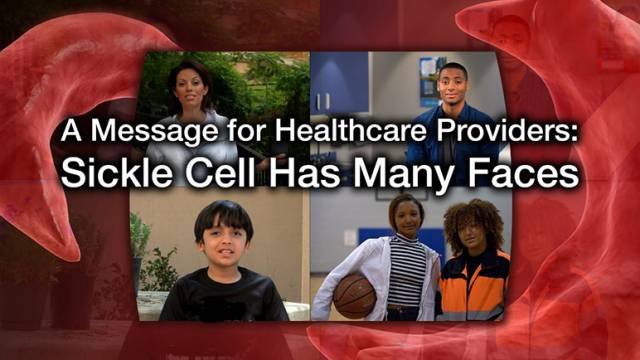You are here
Resources Provide Data and Tools to Improve the Lives of Individuals Living with Sickle Cell Disease
In the United States, sickle cell disease (SCD) affects around 90,000 to 100,000 Americans, according to the Centers for Disease Control and Prevention (CDC). SCD is a lifelong illness that can cause debilitating pain, infection, stroke and organ damage—in some cases, SCD is life threatening. Many people living with SCD face health disparities and are often unable to access quality health care that would help them live longer, healthier lives.
SCD surveillance can help us better understand these barriers and address them by using data to:
- teach healthcare providers about how people interact with the healthcare system;
- provide researchers with accurate information so that they can improve healthcare access; and
- educate policymakers and health care administrators about opportunities for improving healthcare services.
In 2015, the Sickle Cell Data Collection (SCDC) project was launched by the CDC Foundation in partnership with CDC’s Division of Blood Disorders, Tracking California and the Georgia Health Policy Center. Starting in California and Georgia, scientists gathered health information from multiple sources to determine how many people live with the disease and to study long-term trends in diagnosis, treatment and healthcare access. The project which has received financial support from Pfizer Inc., Bioverativ, Novartis Foundation, Doris Duke Charitable Foundation and Global Blood Therapeutics, has now expanded to 11 states.
Sickle Cell Data Collection data have been critical to identify the tools and resources needed for both healthcare providers and individuals living with SCD to promote better health outcomes. This September in recognition of Sickle Cell Awareness Month, we are sharing Sickle Cell Data Collection resources that are designed to educate people about SCD. One of these resources is the Steps to Better Health Toolkit, created through a partnership between CDC and the American Society for Hematology, which provides those living with SCD practical steps to managing their health.
Another resource is Sickle Cell Has Many Faces videos, which are targeted to educate healthcare providers and the public about the diversity among those affected by SCD as well as the importance of timely healthcare delivery despite one’s ethnic or racial background. Other resources include videos promoting blood donations, The Bloodline (Sickle Cell Data’s Collection’s quarterly newsletter), and patient and provider focused fact sheets.
We ask our partners to promote these resources through newsletters, web and social media as ways to continue raising awareness during the month. While there is still much more to learn about SCD, developing key partnerships and disseminating the resources currently available are vital to promoting the health of those living with SCD.
We are proud of this effort that is identifying critical gaps in SCD knowledge, increasing understanding of SCD and saving and improving the lives of those suffering from this challenging and painful disease. Please help us spread the word about SCD by sharing these resources on social media.

